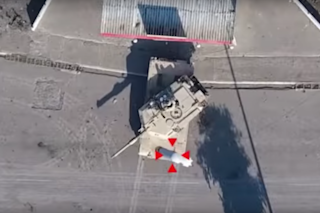A hobbyist drone operated by Islamic State drops a bomb on an Iraqi military Abrams tank. Credit: Middle East Media Research Institute Islamic State's weaponization of consumer drones that anyone can buy off the shelf or on Amazon has reached new heights during the battle for Mosul that has been raging since October 2016. A recent propaganda video released by Islamic State showed off the militant group's increased confidence in using small quadcopter drones to hover in place and drop small bombs on Iraqi military forces. One snippet of the video even shows a drone's bomb striking a U.S.-manufactured Abrams tank in use by the Iraqi military. Iraqi military forces backed by the U.S. have faced a growing threat from small swarms of quadcopter drones as they battle to take back the city of Mosul from entrenched Islamic State fighters. The latter have used relatively cheap off-the-shelf drones to scout ...
Islamic State Video Shows Weaponized Drones at War
Islamic State weaponized drones, including consumer quadcopters, turn the tide in the battle for Mosul against Iraqi forces.
More on Discover
Stay Curious
SubscribeTo The Magazine
Save up to 40% off the cover price when you subscribe to Discover magazine.
Subscribe













